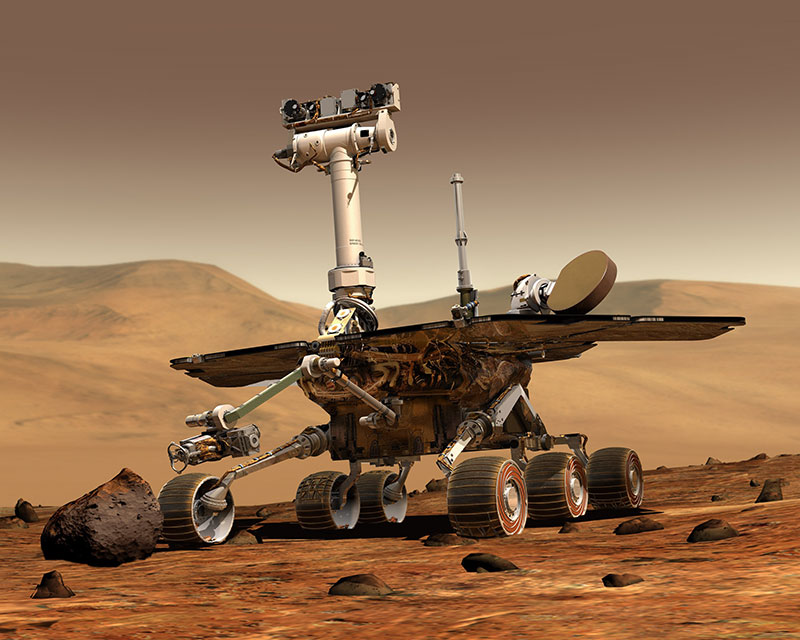Zain Hasnain, Mechanical Engineer
Introduction
Solar-powered robotic systems represent a groundbreaking fusion of engineering ingenuity and sustainable technology. These intelligent machines harness the sun’s energy to perform a wide range of tasks across various industries. In this article, we will explore the applications and feasibility of solar-powered robotic systems, shedding light on how they are transforming industries around the world
- Agriculture – Precision Farming
Application: Solar-powered robots are increasingly used in agriculture for tasks such as planting, weeding, and harvesting. For e.g., the “Ladybird” robot, developed by the University of Sydney, autonomously weeds fields, reducing the need for chemical herbicides and manual labor.
Feasibility: Solar-powered farming robots reduce operational costs, promote sustainable agriculture, and are suitable for remote or off-grid areas where access to traditional power sources is limited. Solar-powered drones equipped with imaging sensors can monitor crop health, analyze soil quality, and efficiently distribute fertilizers.
Example: The Pakistan Agricultural Research Council has initiated a project employing solar-powered robots to monitor wheat crops, achieving significant improvements in crop yields and resource utilization.
- Healthcare: Remote Medical Assistance
Solar-powered robotic systems can address healthcare challenges in remote areas. Telemedicine robots provide healthcare access to underserved communities, connecting patients with healthcare professionals through video calls and enabling diagnostic tests. Few advantages include: Improved healthcare access in rural areas. Timely diagnosis and treatment. Reduced healthcare costs for patients.
Example: In the Thar Desert region of Pakistan, solar-powered telemedicine robots are deployed to connect local health centers with specialist doctors in urban areas, transforming healthcare delivery.
- Construction Industry
Application: The construction sector benefits from solar-powered robots for tasks like bricklaying and concrete pouring. The “SAM 100” robot, developed by Construction Robotics, is capable of laying thousands of bricks per day with precision.
Feasibility: Solar-powered construction robots enhance efficiency, reduce labor costs, and enable safer working conditions. They can work continuously without the need for recharging, significantly increasing productivity.
- Mining Operations
Application: The mining industry benefits from solar-powered robots for exploration, ore extraction, and hazardous material handling. For example, the “SwagBot” robot developed by the Australian Centre for Field Robotics can navigate challenging terrains, reducing human exposure to dangerous environments.
Feasibility: Solar-powered mining robots enhance safety, reduce operational costs, and contribute to more sustainable mining practices by utilizing clean energy sources.
- Disaster Response and Search and Rescue
Application: Solar-powered robots play a crucial role in disaster response by aiding in search and rescue missions. “Cheetah” robots developed by Boston Dynamics are equipped with solar panels, making them self-sustaining during extended missions.
Feasibility: These robots can operate for extended periods, providing vital support in situations where human access is limited, such as post-natural disaster scenarios.
- Space Exploration
Application: Solar-powered robotic systems have been instrumental in space exploration. The Mars rovers, including “Spirit,” “Opportunity,” and “Curiosity,” harness solar energy to explore the Martian surface.
Feasibility: Solar power enables extended mission durations and increased scientific data collection, making space exploration more cost-effective and feasible.
- Transportation and Logistics
Application: Autonomous solar-powered vehicles and drones are revolutionizing transportation and logistics. Companies like Amazon are developing delivery drones that can recharge using solar energy.
Feasibility: Solar-powered transportation reduces emissions, lowers operational costs, and enhances delivery efficiency in urban and remote areas.
Conclusion
Solar-powered robotic systems are rapidly gaining ground across various industries, providing sustainable solutions to long-standing challenges. Their feasibility is demonstrated through reduced operational costs, increased efficiency, and environmental benefits. As technology advances, we can expect solar-powered robots to continue to illuminate the path toward a greener and more advanced industrial future.[email protected] | linkedin.com/in/zain-abbas-hasnain






